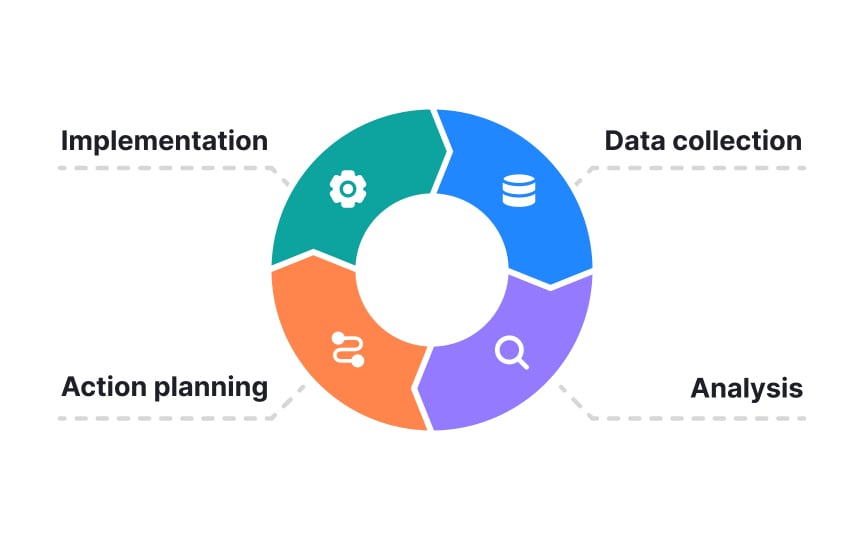Understanding feedback loops
Feedback loops help businesses improve by gathering and acting on customer input through four stages: collecting data, analyzing it, planning improvements, and making changes. These stages work in a continuous cycle rather than a one-time process. The key to effective feedback loops lies in measuring the impact of each change — this measurement reveals whether the changes actually solved problems or enhanced value, guiding the next cycle of improvements. There are two types of feedback loops:
- Positive loops build on what's working well — like when users love a new feature, so the business creates more similar features, leading to even higher satisfaction.
- Negative loops help fix problems early — like when users struggle with a particular task, the business can quickly improve it before losing customers.
Both types are important. Positive loops help grow successful features, while negative loops prevent problems from getting bigger. Using both helps businesses improve existing features while also finding new opportunities.[1]
References
- Nielsen Norman Group: UX Research, Training, and Consulting | Nielsen Norman Group

